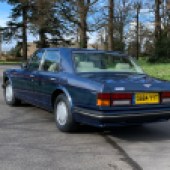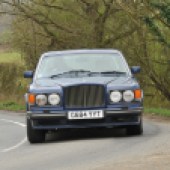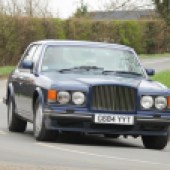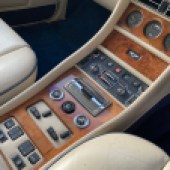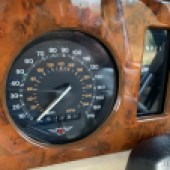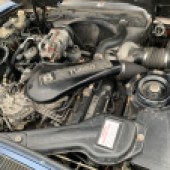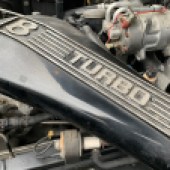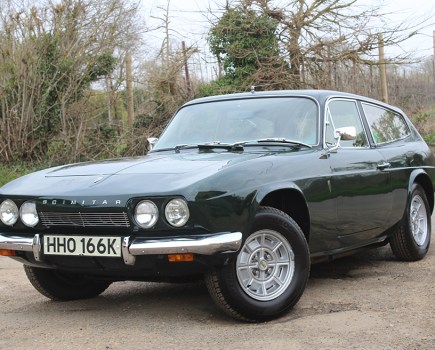The pinnacle of classic Bentleys, the Turbo R can be a lot easier to live with than the later VW-based cars. You still need to know your stuff though
When the dust had settled from the VW/BMW bust-up and the spoils were divided with Rolls-Royce in BMW ownership and VW Group moving in at Crewe to build Bentleys, there was much speculation over the likely fate of both brands.
Much of it was naturally on the negative side but in reality Volkswagen has proven itself a great custodian of the Bentley brand, demonstrating its intent with the mighty Continental GT complete with twin-turbo W12 engine.
Somehow though, these new-era models, while undoubtedly technically superior to the classic Bentleys, lack the character and charm of the more classic models. And by classic, I don’t mean the odd fusion of BMW and Bentley which created the Arnage, but the ‘SZ’ series cars based on the Silver Spirit platform which spawned the Mulsanne Turbo and Turbo R.
There is in fact a significant link between the Turbo R and the VW-era cars, since it was the appeal of the Turbo R which finally allowed Bentley sales to overhaul those of parent brand Rolls-Royce for the first time since the 1950s – thus making the brand attractive to the Wolfsburg board.
Despite its greater age, the Turbo R also makes for an easier car to own than the technically complex Continental GT which is full of trips for the unwary, especially when it comes to parts costs and the need to remove the engine for so many procedures.
The UK’s network of independent Rolls/Bentley specialists is well versed on the Turbo R and the 6.75-litre V8 in general, while parts support is in fact tremendous courtesy of people like Introcar and Flying Spares. Like all exotic cars, there’s a certain amount of myth and rumour around them but a have-a-go DIY-minded owner can achieve a huge amount without getting in over their head – and can lower running costs significantly.
And speaking of running costs, nobody ever bought a turbocharged Bentley for its running costs but driven sensibly its thirst is significantly less than the 6mpg you’ll often see in a Continental GT.
Bodywork
Pressed Steel made these bodyshells out of thick metal which explains the car’s 2.5-tonne heft. Like anything old and made from steel though, they can suffer in the British climate and the wheelarches are the first to go. The cars were originally fitted with rubber stonechip guards on the leading edges of the wheelarch and some owners remove them when they start to perish but it’s also worth questioning whether they were removed for arch rust repairs.
More expensive to fix though is bubbling around the screens, especially common at the base of the rear window where it’s a costly repair with the glass needing to be removed for welding access.
In a largely futile attempt at weight saving, the bonnet, boot and door skins are aluminium, so they won’t rust but reactive corrosion can be an issue, most commonly on the bottom of the bootlid. One easy fix is to fit an oversized rear number plate to simply hide the area.
Wonky bumper corners are a common sight and are the result of the steel core expanding inside the rubber as it rusts, but the Bentley aftermarket can supply remanufactured parts using a stainless steel insert which doesn’t suffer the same issue.
Faded paint on the bonnet doesn’t necessarily mean it’s been painted: the turbocharged V8 generates a fair bit of heat and if the insulation panels are no longer present on the underside of the bonnet then the paint will suffer.
Elsewhere, things like shrinking window scraper seals are par for the course, as are various holes for phone aerials and the like.
Engine
The long-serving 6.75-litre pushrod V8 is very much a known quantity and should spring no surprises. It’s an under-stressed unit and is lazy in operation, majoring on torque rather than high revs.
Carb-fed cars use twin SU’s and can suffer with tricky hot starting, but the fuel-injected engines are much better in this respect and should be easy to live with. Clattery top ends can be down to worn tappets but by and large any significant problems should be obvious.
The ignition system on Bosch-injected cars is essentially two separate systems with two distributors, one driving the other via a rubber belt. If it breaks, you’ll be running on only four cylinders and will be lucky to limp off the motorway, so you want to see evidence of when it was last changed.
Suspension and brakes
Like the other Rolls-Royce Silver Spirit-based cars, the Bentley Turbo R uses self-levelling rear suspension which is powered by the high-pressure hydraulic system shared with the brakes. This is one area of the car where DIY tinkering isn’t advisable and specialists can use the correct test gear to ascertain where problems are. One simple test is to have a couple of big chaps sit on the open boot sill with the engine running and check to see whether the rear end lifts itself level.
Problems needn’t be cause for panic, with used struts available at sensible cost and also OE-quality aftermarket parts.
From 1990, the cars used a dynamic damper control set-up dubbed Active Ride Control, which firmed up the damping according to how hard the car was being driven – taking signals from throttle, brake lights and accelerometer and varying the damping via a mechanical valve.
When operating properly it’s an impressive system despite not being as fast-acting as modern electronic equivalents and as you power through sweeping bends you can feel the whole car stiffening up.
A malfunctioning system will manifest itself as a strangely knobbly low-speed ride, so try a couple of cars to get a feel for how they should drive.
The high-pressure hydraulic system was licensed from Citroën and works in a very similar way with pump and accumulator spheres, although the pedal action is far more progressive than the on-off system of a CX or DS.
Again, this is one part of the car best left to specialist workshops who can measure the operating and residual pressure in the system.
It’s a fully powered system operated by the high-pressure hydraulics and uses two calipers on each front wheel. With the engine off, it should be possible to pump the brakes several times before the system runs out of pressure and if not, then suspect a fault with a pressure sphere.
The parking brake gets little use and as a result the linkage can tend to seize up. Regular use and sensible greasing is the answer.
On cars with ABS the warning light should come on with the ignition and go out with the engine running. If the warning light comes on while driving then a special Bosch diagnostic tester is required, but you can also check the wiring to the sensor for chafing – it’s a common issue at the front. New sensors are costly but Flying Spares can provide used replacements at under £100 and they’re easy to fit… if the existing sensor hasn’t corroded into the hub. In which case be prepared for a struggle.
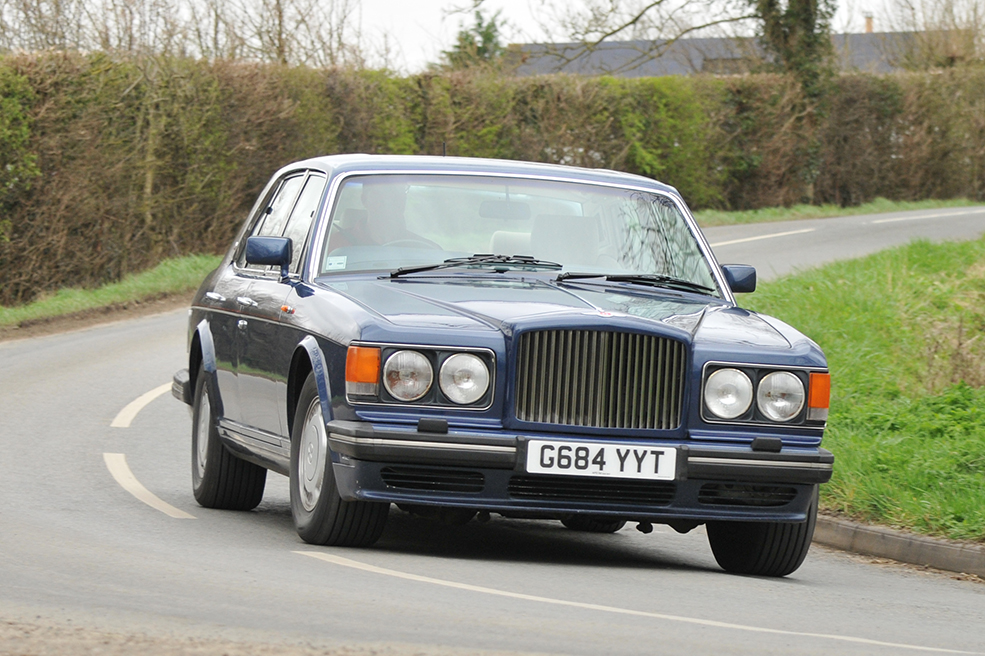
Transmission
This is one area where you don’t need to panic, as the GM Hydramatic and ZF boxes are both robust units. Just make the usual checks of ensuring that it engages drive smartly both forwards and backwards and changes up and down smoothly.
Take care when checking the fluid and observe the warning label about pulling the wiper relay first, as access involves the danger of getting limbs caught in the linkage.

Interior
Part of the charm of any Bentley is the interior and it’s here that costs can quickly mount up when a tatty example needs bringing back to life. Take your time evaluating what can be revived and what needs replacement parts or specialist skills: for example, faded leather can be transformed with colour-matched dye from the likes of the Furniture Clinic applied with a simple hobby spray gun and plenty of patience.
On the other hand, damaged veneer needs specialist skills to repair, the cost of which makes a replacement used part more cost-effective. This is an ideal solution for door cappings, but with the dashboard you may end up with a pattern which doesn’t match the other panels. If the veneer has suffered and is cracked or peeling, use your nose: does the car smell damp and musty?
If the electric windows are slow, lubricating the drive chains and guides can work wonders, but when the bush comes adrift from the motor they will tend to seize up. Replacements are available though.
If the stereo sounds distorted, you’ll probably find the foam from all four speaker cones has rotted away. They’re not very good speakers anyway, so modern replacements are an easy solution. And if you want to fit a modern audio system then cars with the boot-mounted Blaupunkt amplifier will need an adapter cable making up if you don’t want to run new speaker wires up to the console.
If the dashboard warning light cluster (‘DIP’) has lost the gear selector indicator and the trip distance reading then a reconditioned panel is the solution. Likewise the electric seat modules, which tend to fail when the internal batteries powering the memory function leak on to the circuit board.
Wheels & tyres
Don’t overlook the cost of tyres on the Turbo R. There’s essentially only one car which runs a 15-inch wheel, weighs 2.5 tonnes and can crest 140mph and this is it, meaning there’s not a huge demand for tyres. The only choice is the Avon CR27, which was originally specially developed for the car and as they’re made infrequently in small batches, supply can sometimes be patchy. If they are available, budget on £1200 upwards for a set – and remember, there’s not even a budget alternative.
Cars on the later 17-inch rims have a much better choice of tyres, with obvious cost benefits. You can switch an earlier car to the 17s, but a used set tends to run at £1000 so it’s very much a long-term saving.
Bentley Turbo R: our verdict
There’s an old saying that no matter how cheap it becomes, a £100,000 car will always come with the running costs of a £100,000 car but in the case of the Bentley Turbo R that’s not necessarily true.
Yes, a rotten example will be an expensive proposition, as will a car needing extensive specialist work to the hydraulics but in many ways these cars are the ultimate have-a-go hero with plenty of scope for DIY owners to get stuck in. Bringing a sound but neglected Turbo R back up to scratch can be a rewarding process and when you’re done, there’s nothing that quite offers the same driving experience. When you crack open the throttle for the first time, feel the prow rise ever so slightly and the big saloon force you gently but firmly back into the seat, you’ll realise what it’s all about.





